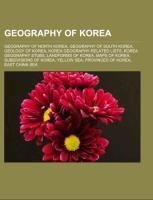
-
 Anglický jazyk
Anglický jazyk
Geography of Korea
Autor: Source: Wikipedia
Source: Wikipedia. Pages: 49. Chapters: Geography of North Korea, Geography of South Korea, Geology of Korea, Korea geography-related lists, Korea geography stubs, Landforms of Korea, Maps of Korea, Subdivisions of Korea, Yellow Sea, Provinces of Korea,... Viac o knihe
Na objednávku
16.11 €
bežná cena: 17.90 €
O knihe
Source: Wikipedia. Pages: 49. Chapters: Geography of North Korea, Geography of South Korea, Geology of Korea, Korea geography-related lists, Korea geography stubs, Landforms of Korea, Maps of Korea, Subdivisions of Korea, Yellow Sea, Provinces of Korea, East China Sea, List of mountains in Korea, Sea of Japan naming dispute, Kangnido, List of castles in Korea, International rankings of South Korea, Eight Provinces of Korea, Korean Peninsula, 38th parallel north, List of rivers of Korea, Daehangno, List of provinces of Balhae, Gwangpo Bay, Hapcheon, Saemangeum, Chungcheong, Mulyeongari-Oreum, Southeastern Maritime Industrial Region, Eight Views of Danyang, Baekdudaegan, Noktundo, Namak, South Korea, Kim Il-sung Square, Paljoryeong, North Korea Uncovered, Yusong foot spa, Eight Views of Korea, Amurian Plate, List of regions of Korea, Capital of Korea, Haedong Samgukdo, List of archaeological sites in Korea, Muljangori-Oreum, Bukhan River, Yeongdong Region, Yeongseo, Sobaek Mountains, East Korea Bay, Korean toponymy and list of place names, Eight Views of Pyongyang, Kwanbuk, Eunjin, Honam, Yeongnam, List of volcanoes in Korea, Gageo Reef, Gungmangbong, List of lakes in Korea, East Korea Warm Current, Daegwallyeong, Kwannam, Shintanjin, List of national parks of Korea, Surisan, Parangcho, Jindong Formation, South Sea, Pungdeokcheon1-dong. Excerpt: Connection Timeout The international name for the body of water which is bordered by Japan, North Korea, Russia, and South Korea is disputed. The Japanese government supports the use of the name "Sea of Japan", while South Korea supports the name "East Sea", and North Korea supports the name "East Sea of Korea". Currently, most international maps and documents use either the name Sea of Japan (or equivalent translation) by itself, or include both the name Sea of Japan and East Sea, often with East Sea listed in parentheses or otherwise marked as a secondary name. The involved countries (especially Japan and South Korea) have advanced a variety of arguments to support their preferred name(s). Many of the arguments revolve around determining when the name Sea of Japan became the common name. South Korea argues that historically the more common name was East Sea, Sea of Korea, or another similar variant. South Korea further argues that the name Sea of Japan did not become common until Korea was under Japanese rule, at which time it had no ability to influence international affairs. Japan argues that the name Sea of Japan has been the most common international name since at least the beginning of the 19th century, long before its occupation of Korea. Both sides have conducted studies of antiquarian maps, but the two countries have produced divergent research results. Additional arguments have been raised regarding the underlying geography of the sea as well as potential problems regarding the ambiguity of one name or the other. A map of the Far East by Matteo Ricci in 1602 describing the sea as the Sea of Japan.Both sides in the dispute have put forward a number of arguments to support their claims. According to the Ministry of Foreign Affairs for Korea, the name East Sea has been used in Korea for over 2,000 years, including in History of the Three Kingdoms' (¿¿¿¿, 1145), the monument of King Gwanggaeto, and "Map of Eight Provinces of Korea" (¿¿¿¿, 1530). The first doc
- Vydavateľstvo: Books LLC, Reference Series
- Rok vydania: 2017
- Formát: Paperback
- Rozmer: 246 x 189 mm
- Jazyk: Anglický jazyk
- ISBN: 9781157065555






 Ruský jazyk
Ruský jazyk 





